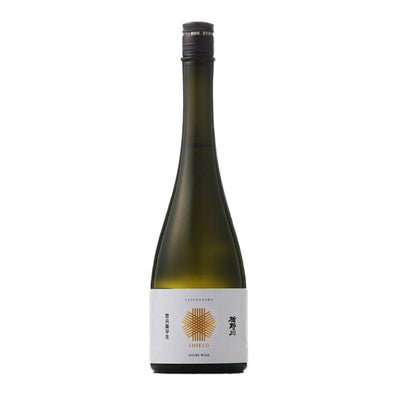Try Sake From Shimane Prefecture, the Birthplace of Sake
The Birthplace of Sake
清酒发源地
The area of Shimane is also said to be the birthplace of sake. This widespread belief is based on myths about sake’s ties to Shimane’s Izumo region recorded in the Kojiki. The first mention of sake in the Kojiki, an early-8th-century chronicle of Japanese legends and oral traditions based on historical accounts, tells the story of how the god Susanoo used eight buckets of sake to kill the gigantic eight-headed serpent Yamata no Orochi at Izumoto save the village.
据说岛根地区是日本清酒的发源地。这种广为流传的说法是基于《古事记》中记载的清酒与岛根县出云地区的神话有关。最早提到清酒的是8世纪早期的《古纪事》,这是一部基于历史记载的日本传说和口述传统编年史,讲述了须佐之男大神在出云如何用八桶清酒杀死了井本村的八岐大蛇,拯救了村庄的故事。

Sake From Shimane Prefecture
岛根县清酒
Rihaku Junmai Blue Purity is made with a recently developed rice Kannomai, which is only used in Shimane prefecture. Kannomai means "god dance".
李白纯米纯蓝清酒是用最近开发的一种只在岛根县产的神之舞大米制成的,意思是神仙在跳舞。
It is believed in Japan that all the deities throughout Japan gather once every year and hold meetings here in Izumo, Shimane Prefecture. Every year during October, gods throughout Japan travel to Izumo Taisha, one of the most ancient and important Shinto shrines in Japan.
日本人民相信,日本所有的神灵每年都会在岛根县出云举行一次会议。每年10月,日本各地的神都会前往出云大社,这是日本最古老、最重要的神道教神社之一。
This sake makes you imagine how Shinto Gods enjoy this sake together as they gather for the annual convention at Izumo Taisha. Rihaku Junmai BLUE PURITY has a quite complicated flavour such as a combination of Matsu pine resin, roasted chestnut and a touch of honey and bitter cacao. The dryness and umami of Kannomai rice are perfectly balanced, you can easily drink one cup after another.
这款清酒让你想象到,当神道教的众神聚集在出云大社参加年度大会时,他们是如何一起享用这款清酒的。李白纯米纯蓝清酒的味道相当复杂,混合了松木树脂、烤栗子、蜂蜜和苦可可的味道。神之舞酒米饭的干爽和鲜味完美平衡,你可以轻松地一杯接一杯地喝下去哦。
















Leave a comment